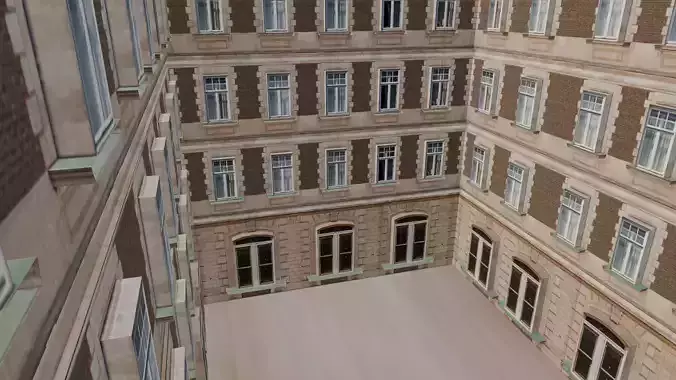1/17
Building 3D Model
General Overview
The provided digital asset is a 3D model representing a building. This model is meticulously crafted to serve a wide array of applications in architectural visualization, game development, and various simulation scenarios. Designed with both realism and usability in mind, it stands out through its detailed geometry and surface characteristics.
Geometry & Topology
Geometry Composition: The building model's geometry integrates a balanced combination of quads and triangles, optimizing both visual fidelity and computational efficiency.Polygon Count: A total of 3,675 polygons define the model’s structure, offering a fine balance between detail and performance.Vertex Count: The model consists of 4,901 vertices, supporting its complex shape and ensuring the geometry's integrity.Textures & Materials
Textures: The model is textured to enhance visual realism. These textures are applied meticulously to simulate the intricate details and patterns found on building surfaces.Materials: Diverse materials are utilized to replicate the building’s various surface properties. These materials contribute to a more authentic and believable appearance, accurately representing different building elements such as walls, windows, and roofing.Rigging & Animation
Rigging: This model does not include rigging. It is designed as a static model without an internal skeleton or joint system for posing or movement.Animation: There are no pre-defined animations associated with this model. It is intended for static visualization and does not support dynamic behavior out-of-the-box.UV Mapping
UV Mapping: Comprehensive UV mapping is applied to the model. This ensures that textures align correctly with the 3D geometry, maximizing texture detail and maintaining visual consistency across the model’s surfaces.Applications
This building 3D model is versatile and can be integrated into various professional domains, including but not limited to:
Architectural Visualization: Ideal for creating realistic renderings of architectural projects, providing clients and stakeholders with an accurate depiction of design concepts.Game Development: Suitable for use as an in-game asset, adding realism to urban environments and enhancing the overall aesthetic of virtual worlds.Simulation Scenarios: Useful for training simulations, virtual walkthroughs, and educational tools that require detailed and realistic building representations.Conclusion
In summary, this 3D model of a building combines detailed geometry with high-quality textures and materials to deliver a realistic and visually compelling digital asset. Its carefully crafted design, coupled with effective UV mapping, ensures that it meets the standards required for professional use in various digital environments. While it is not rigged or animated, its static nature makes it a robust and reliable choice for static renderings and simulations.
REVIEWS & COMMENTS
accuracy, and usability.

















